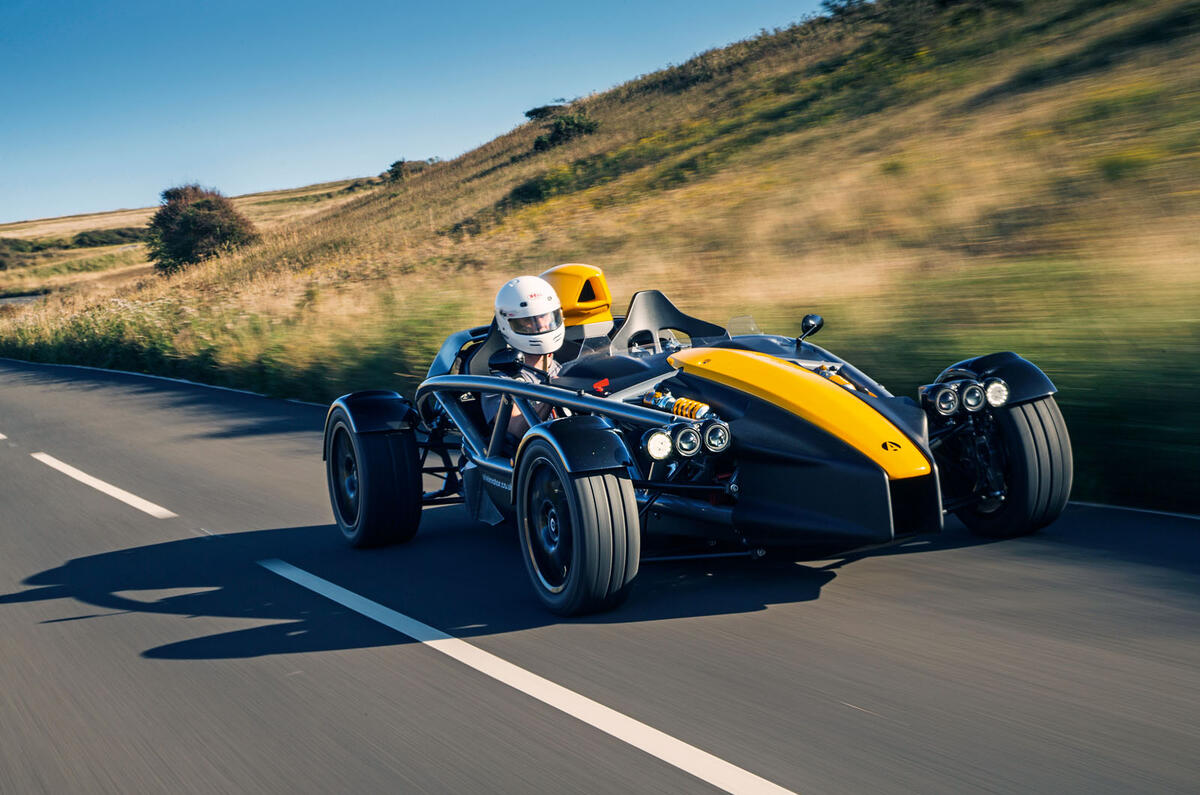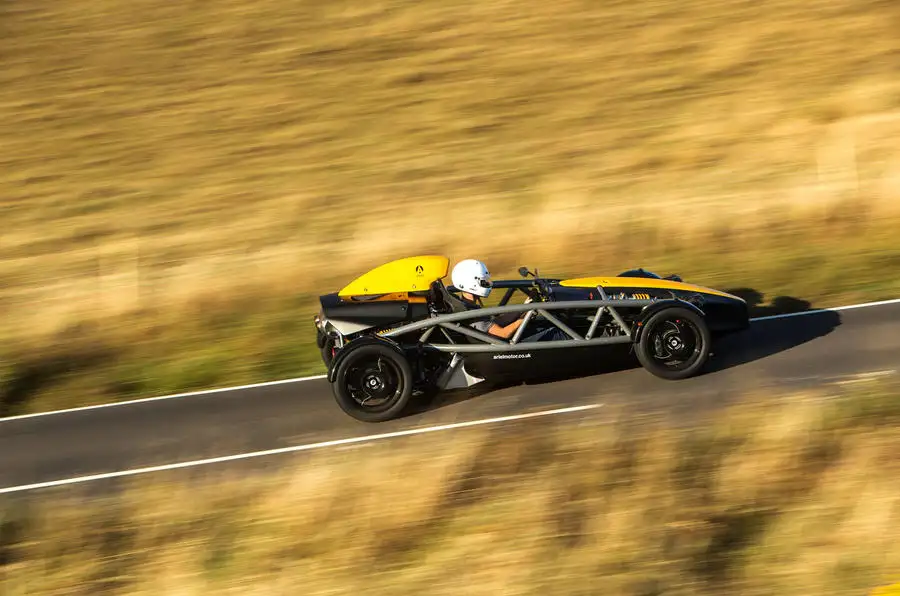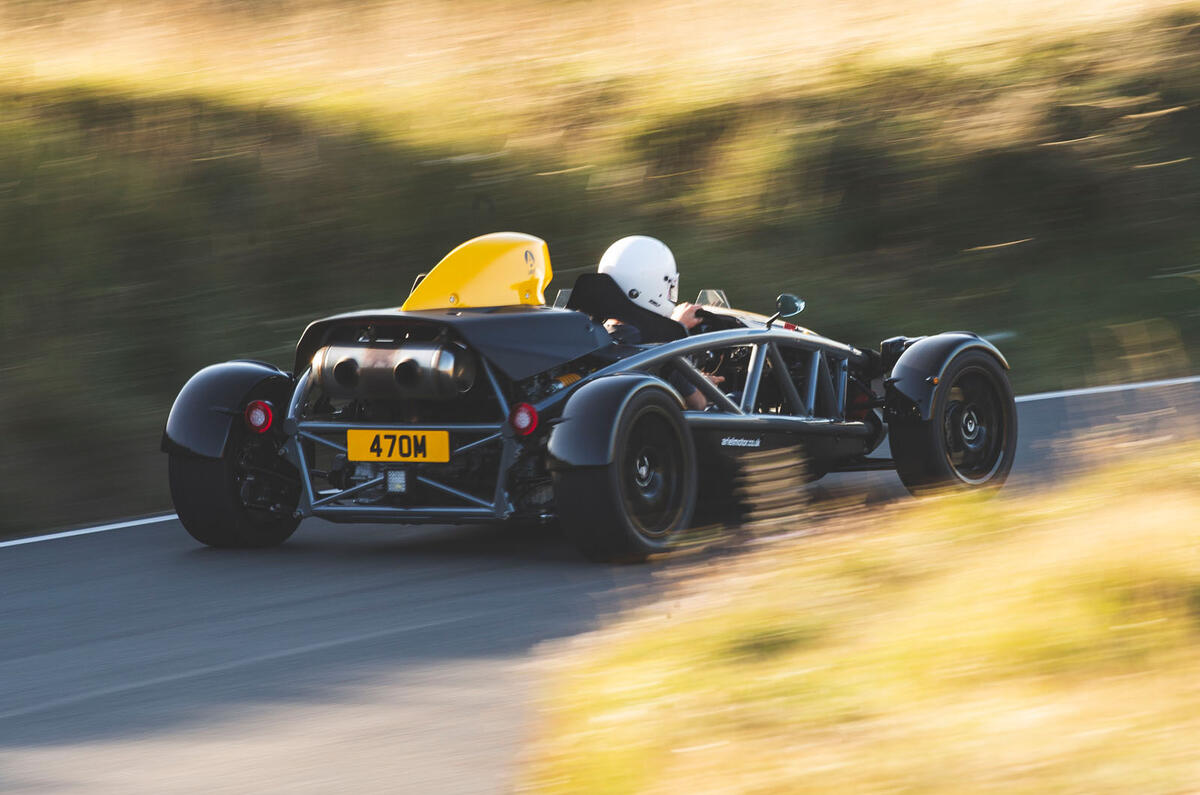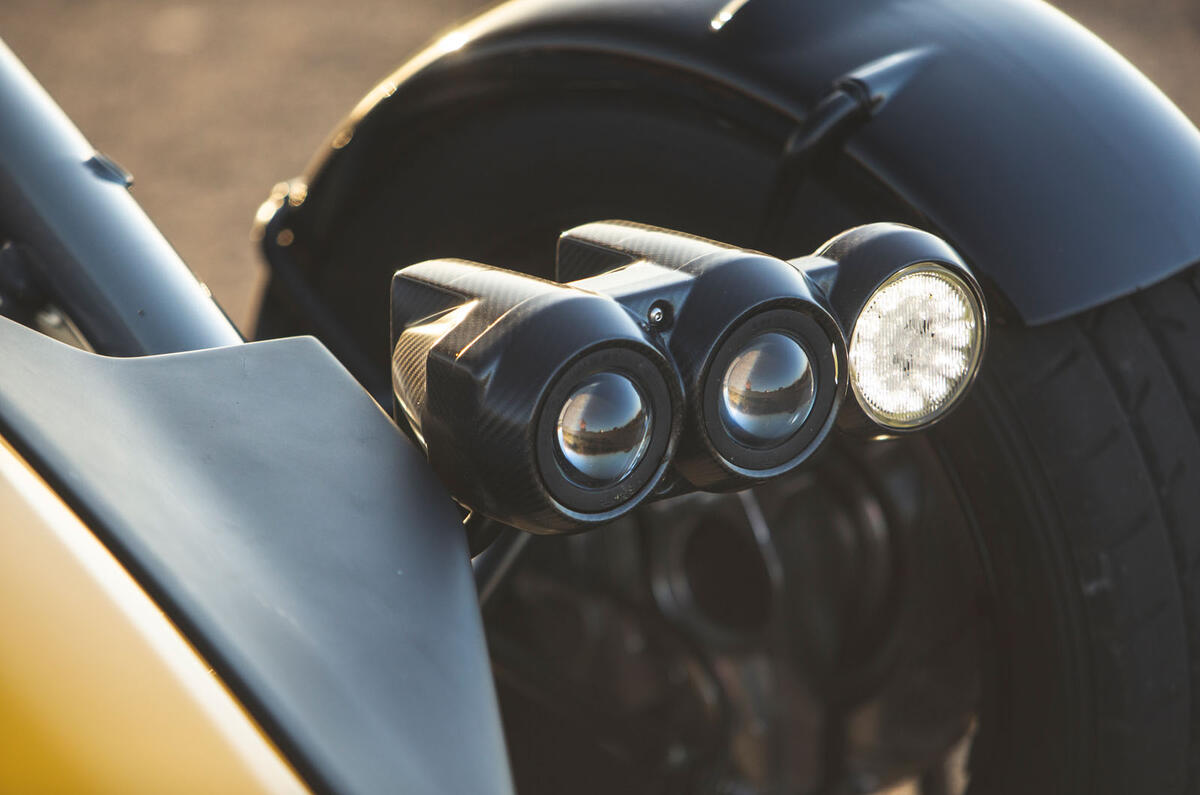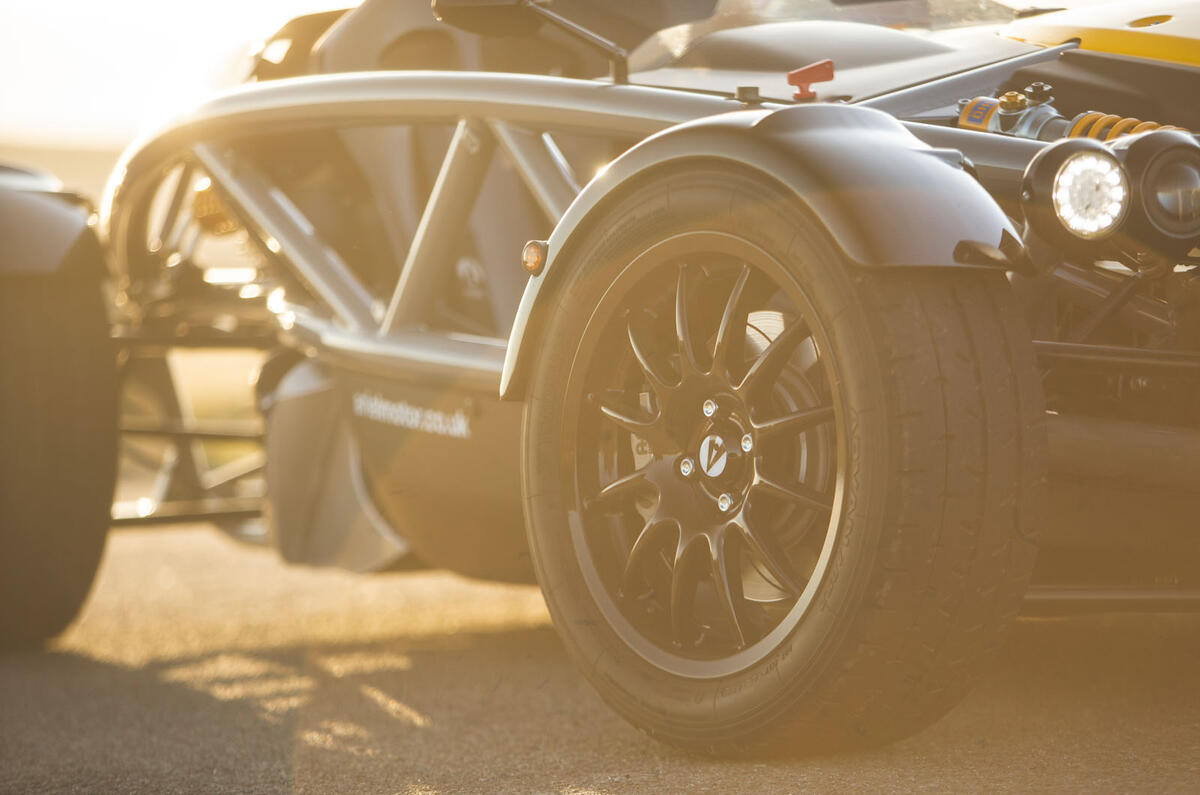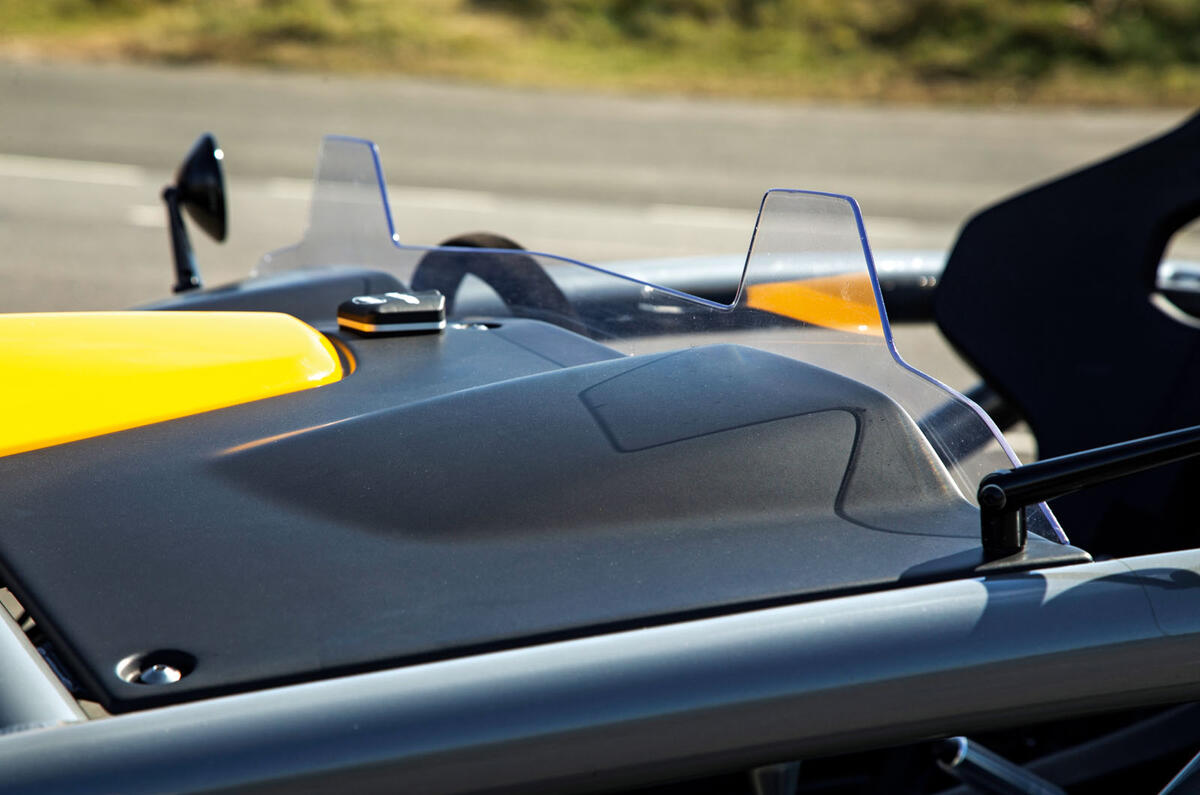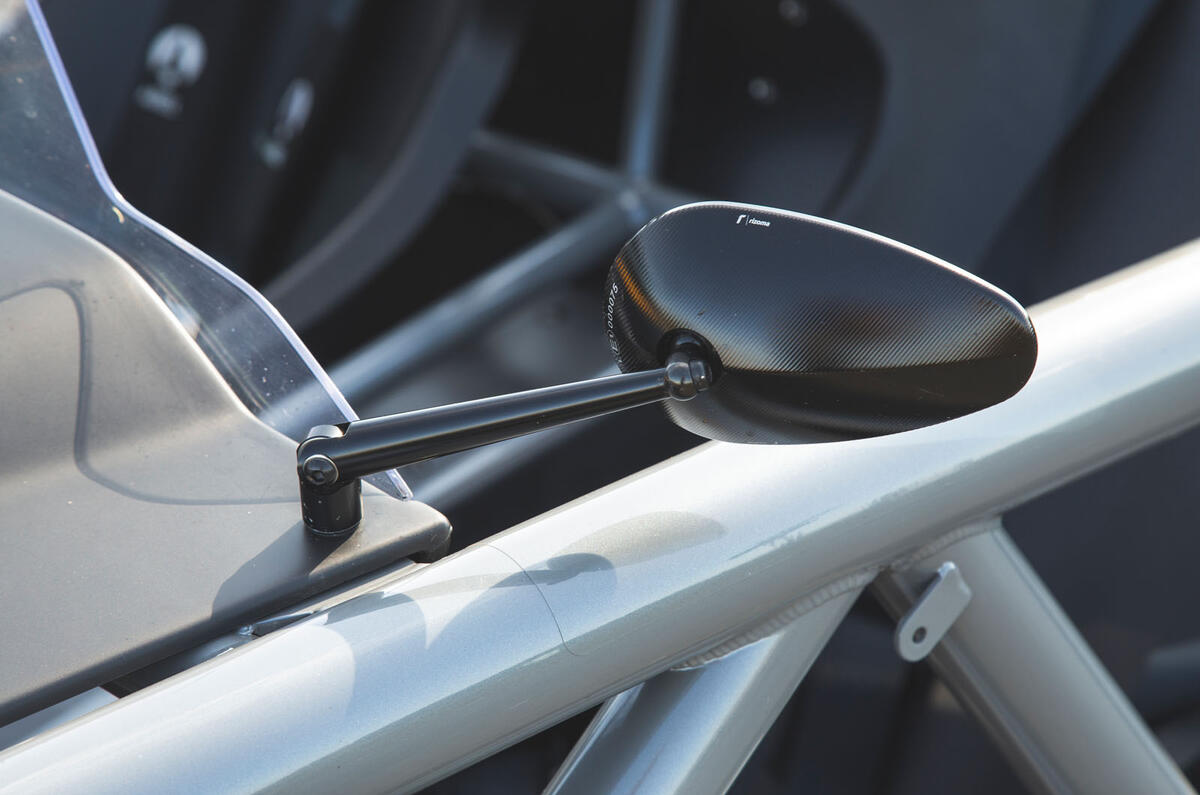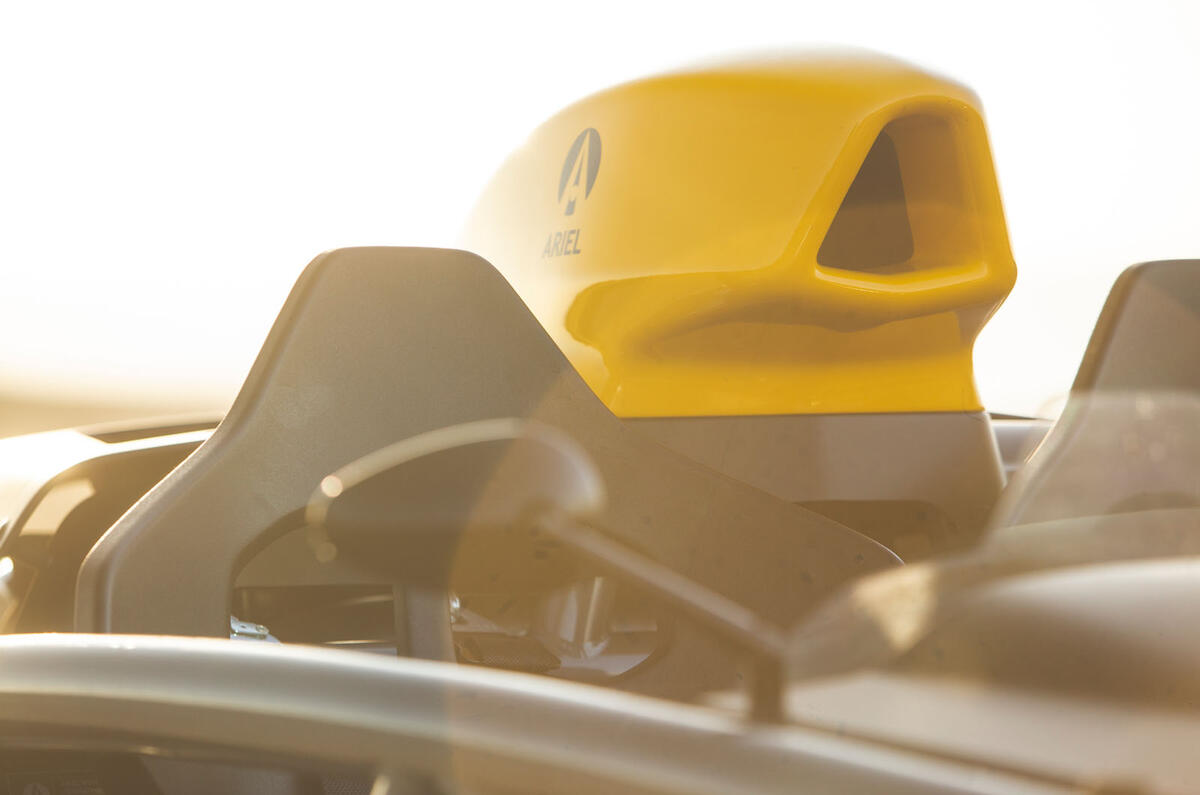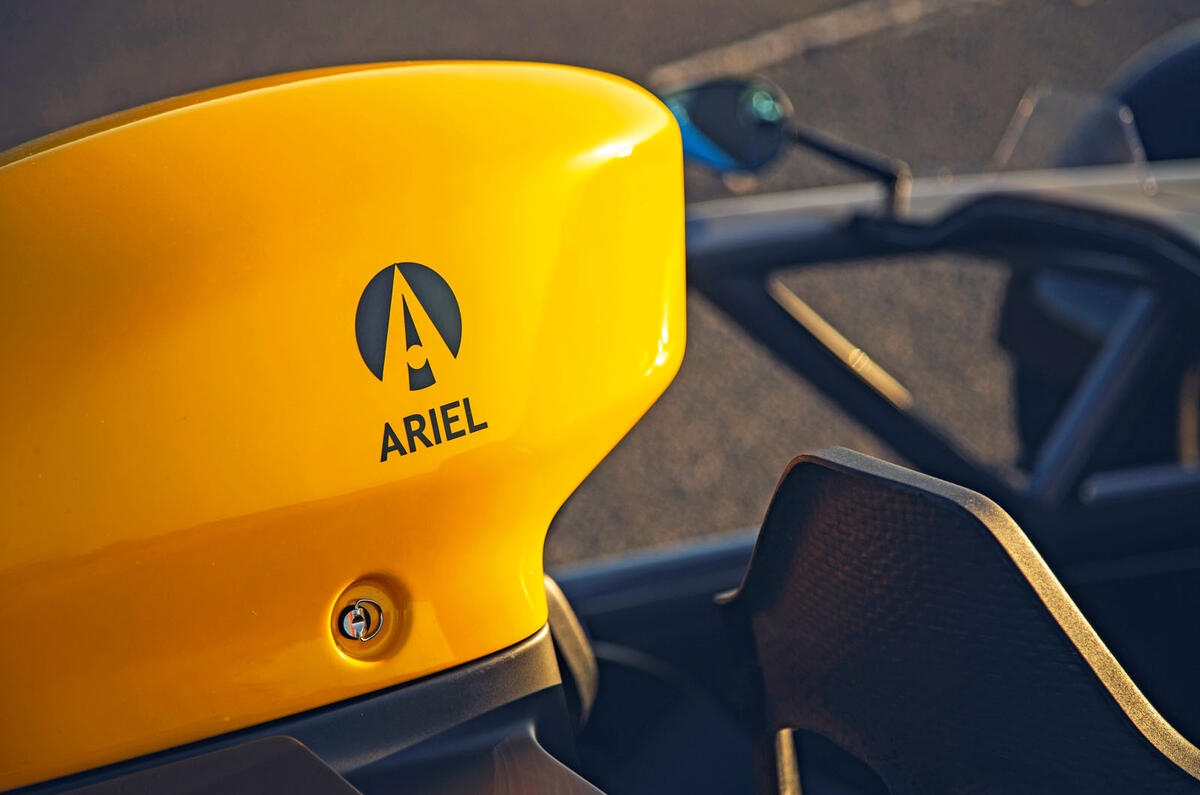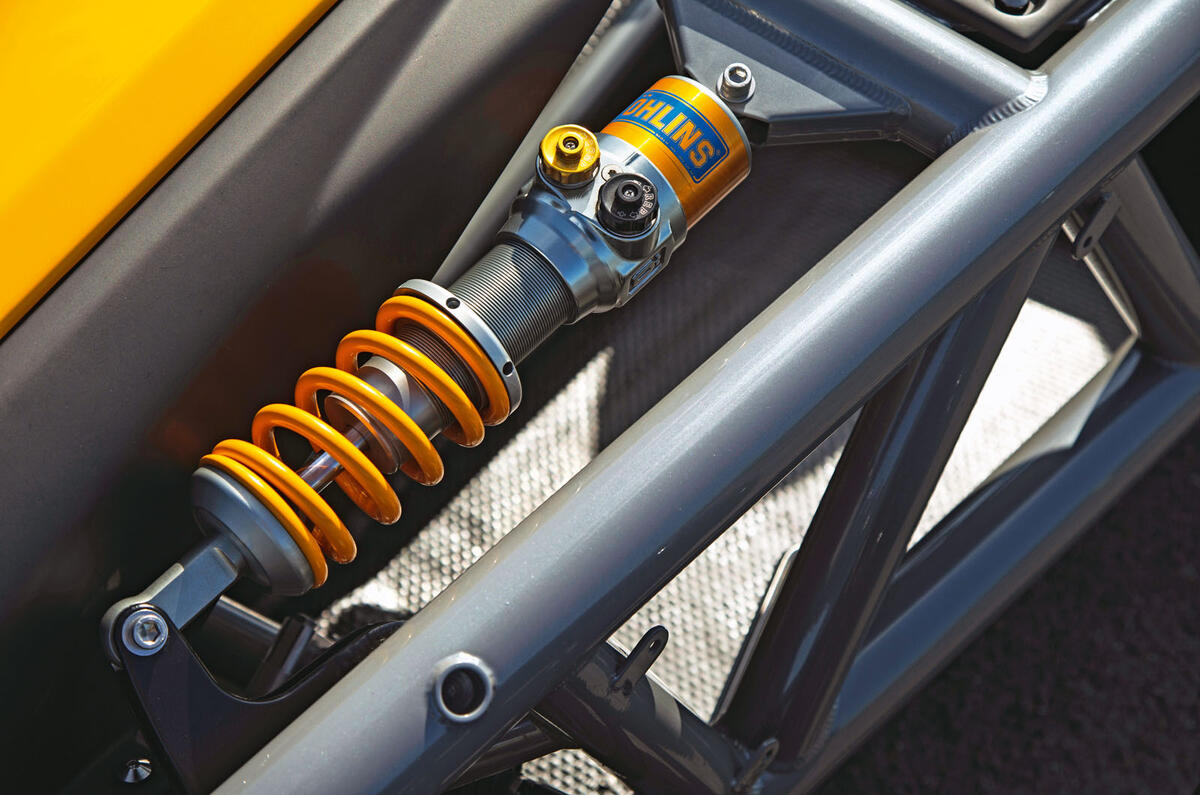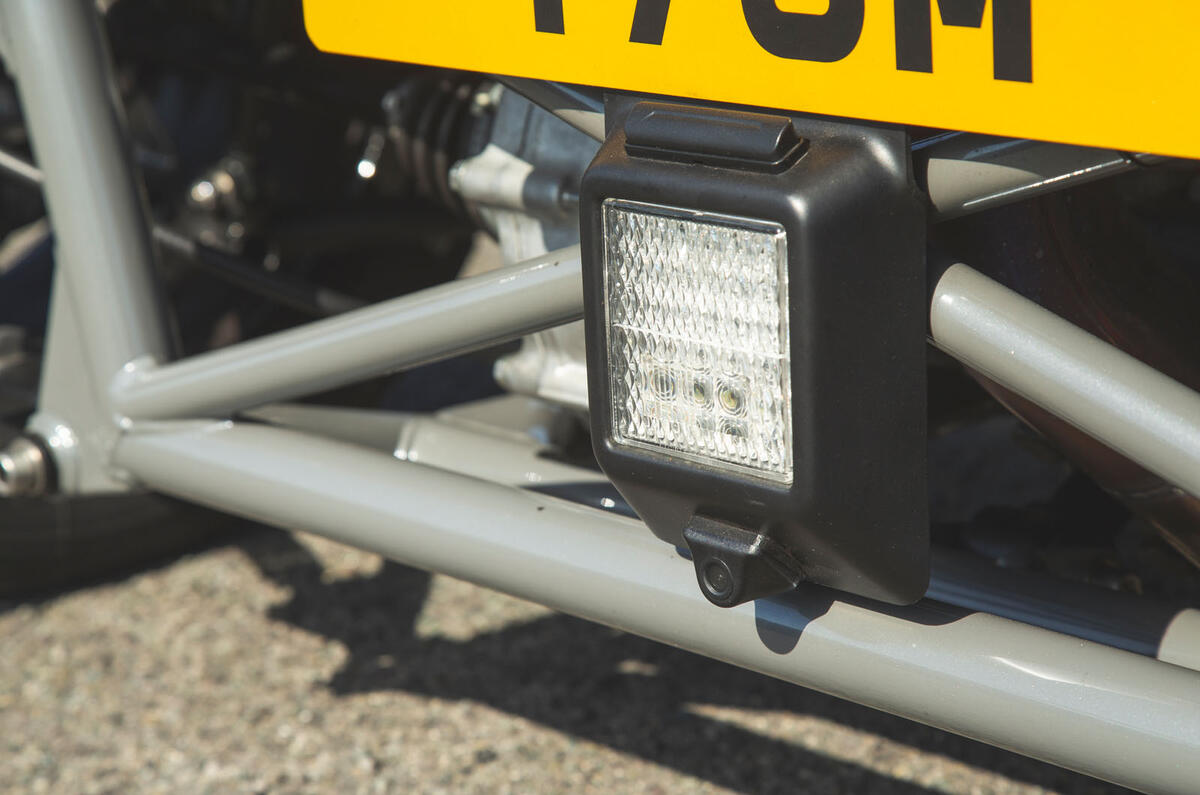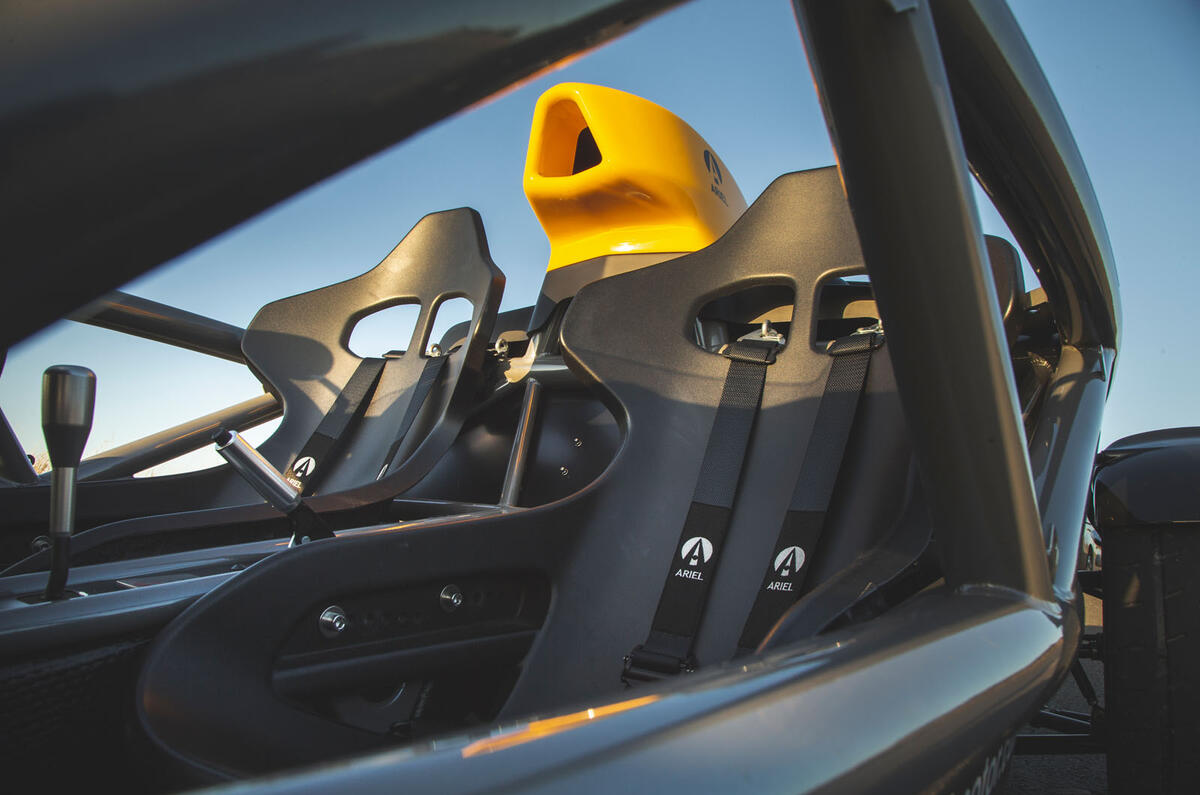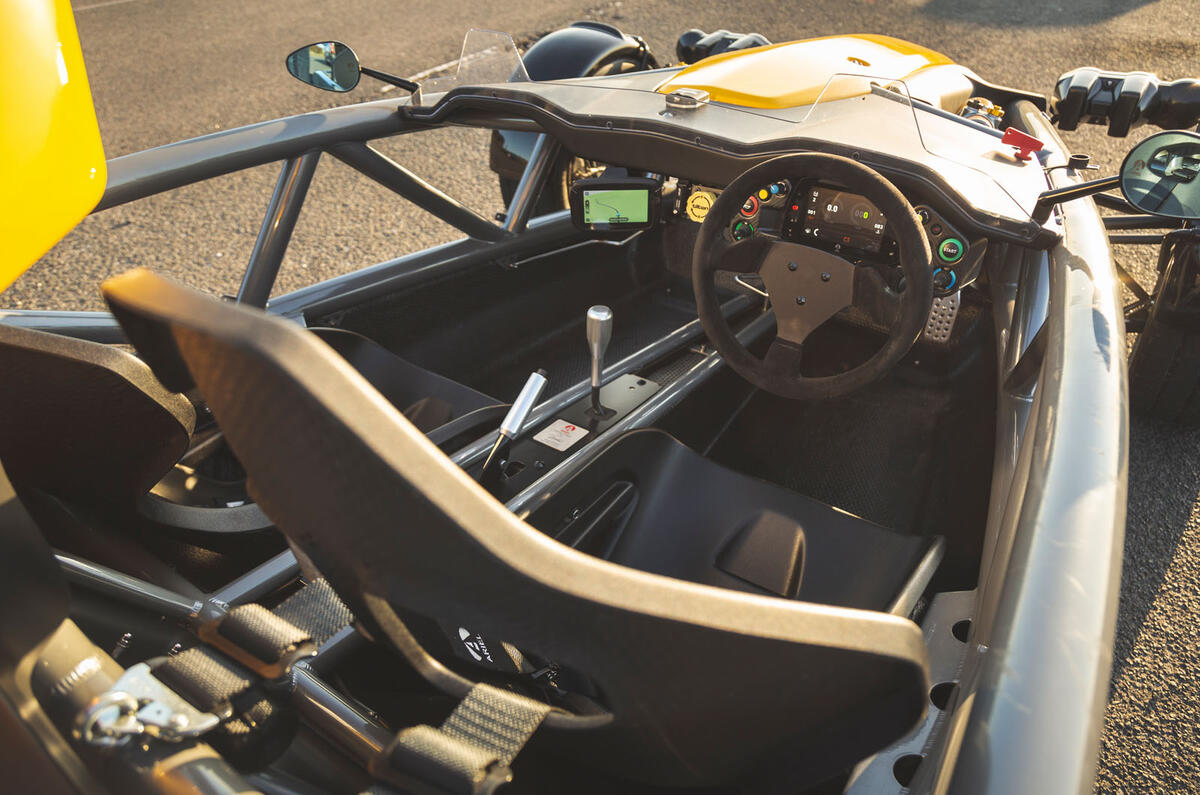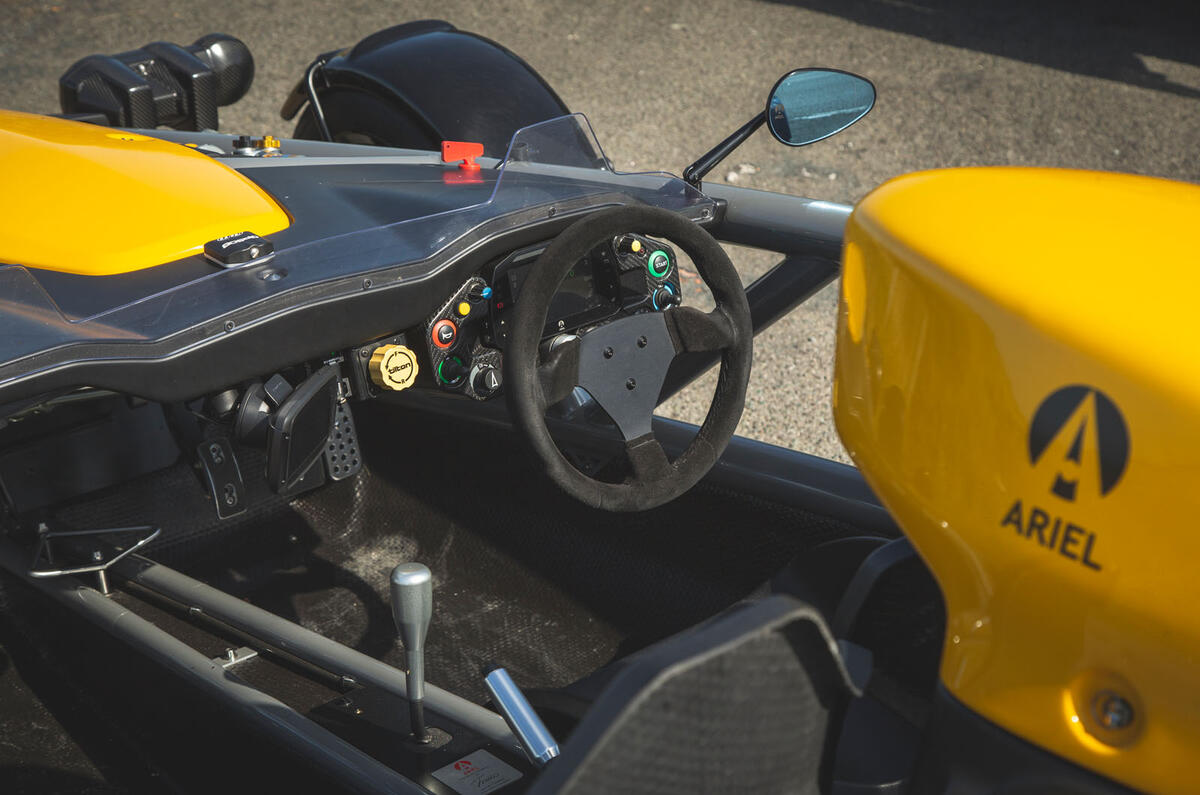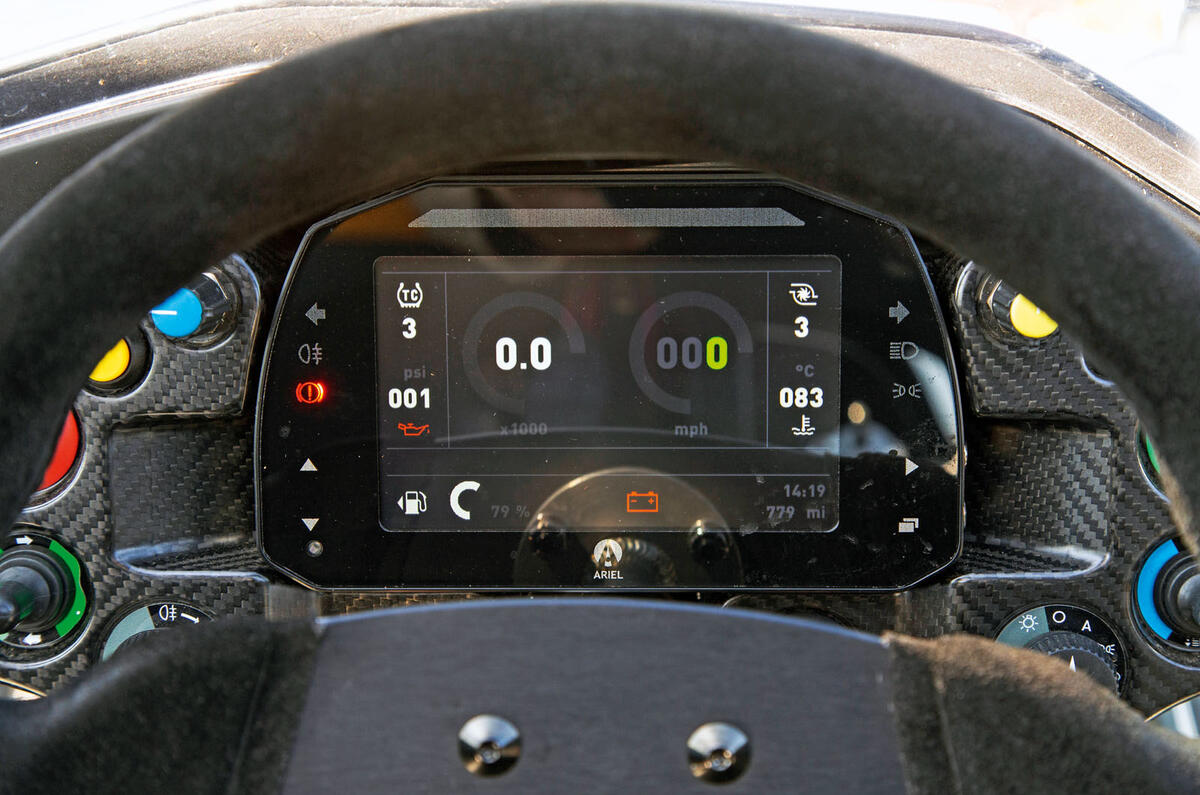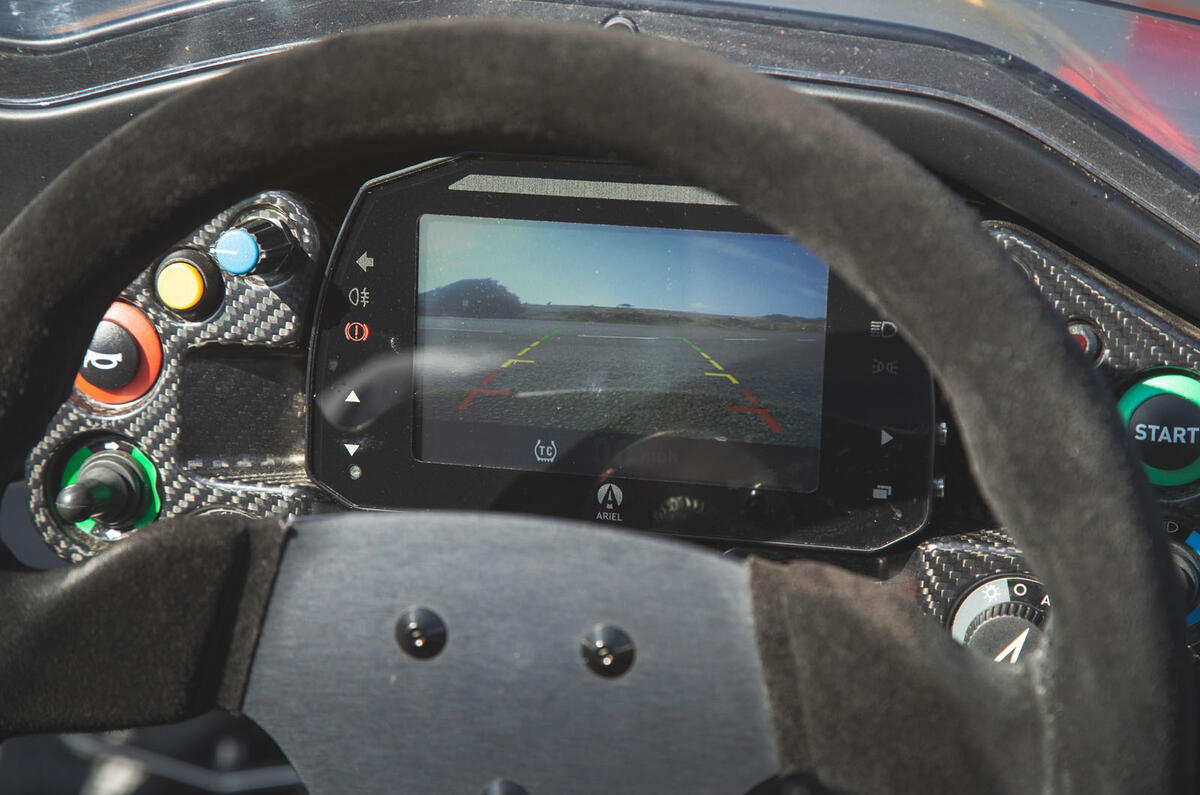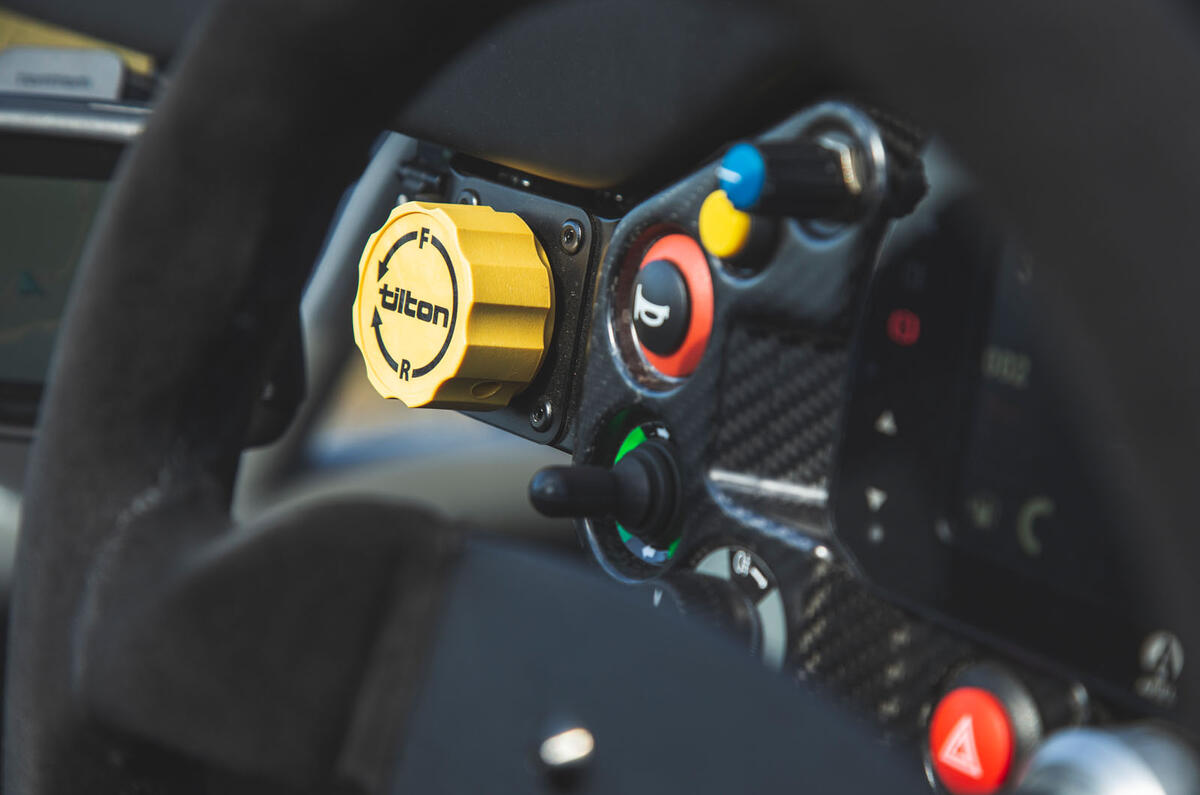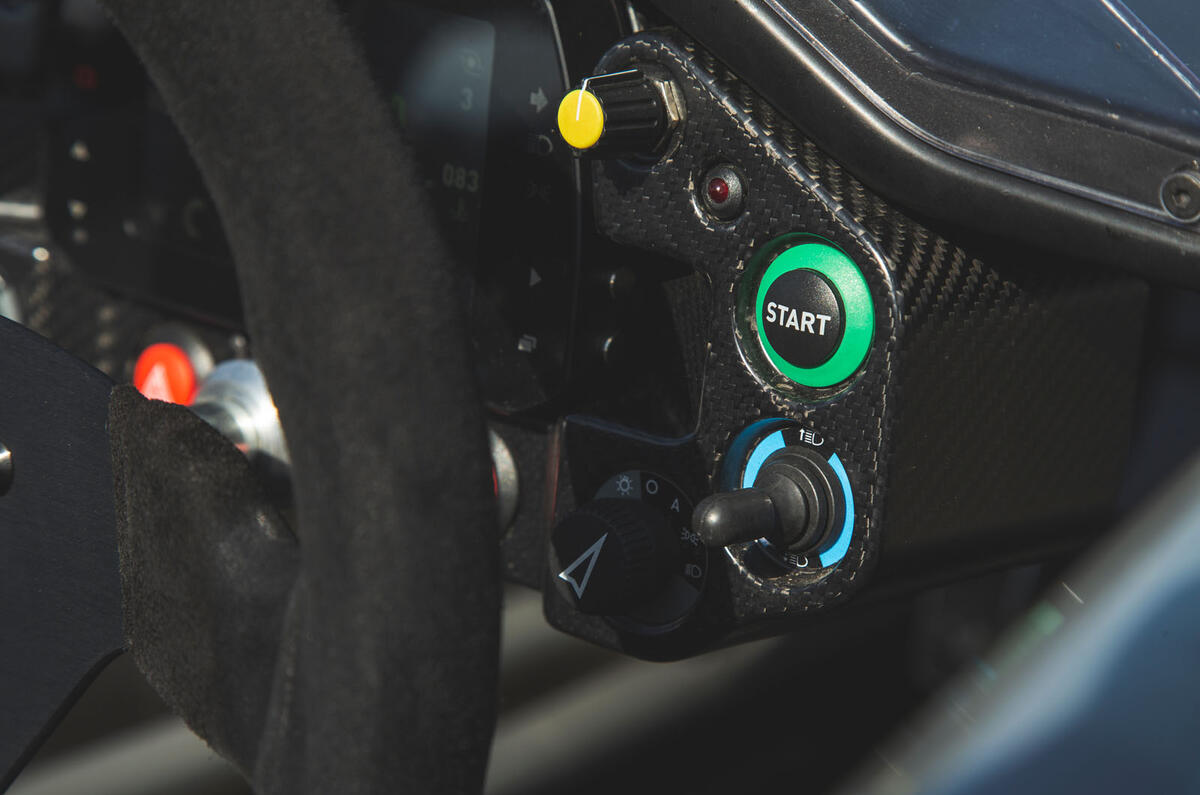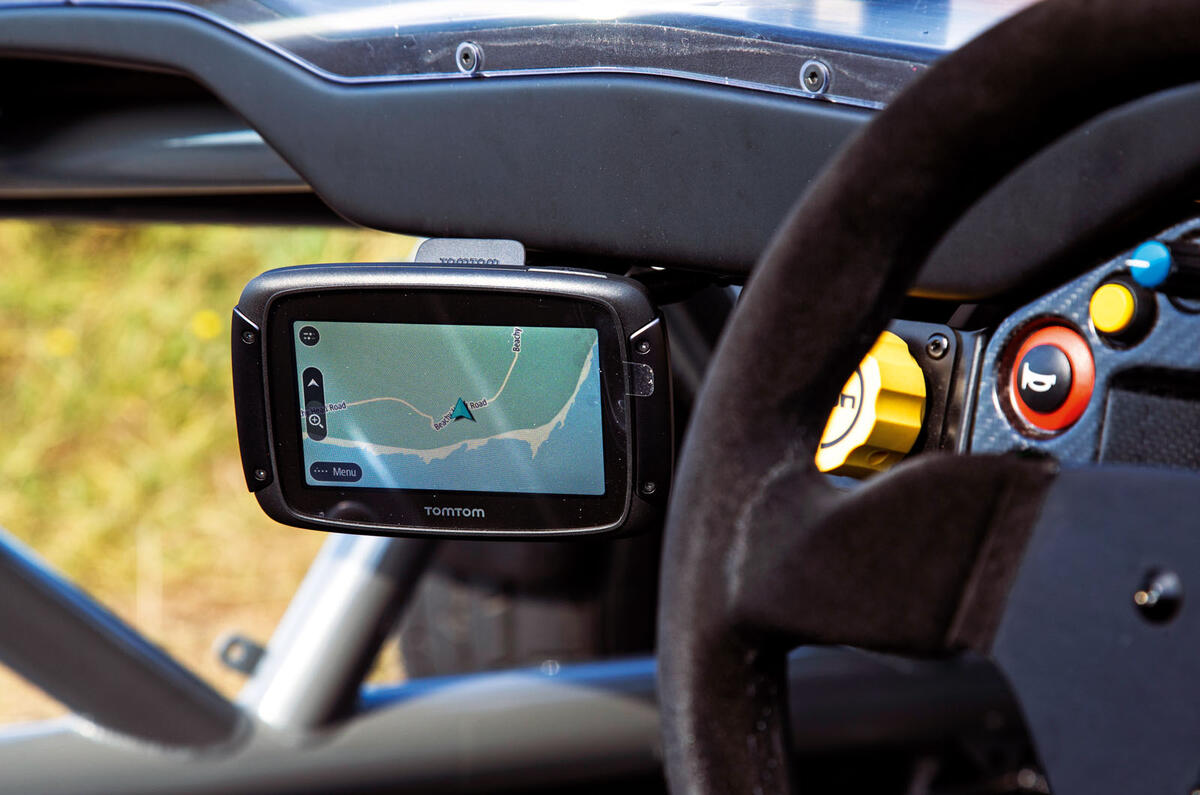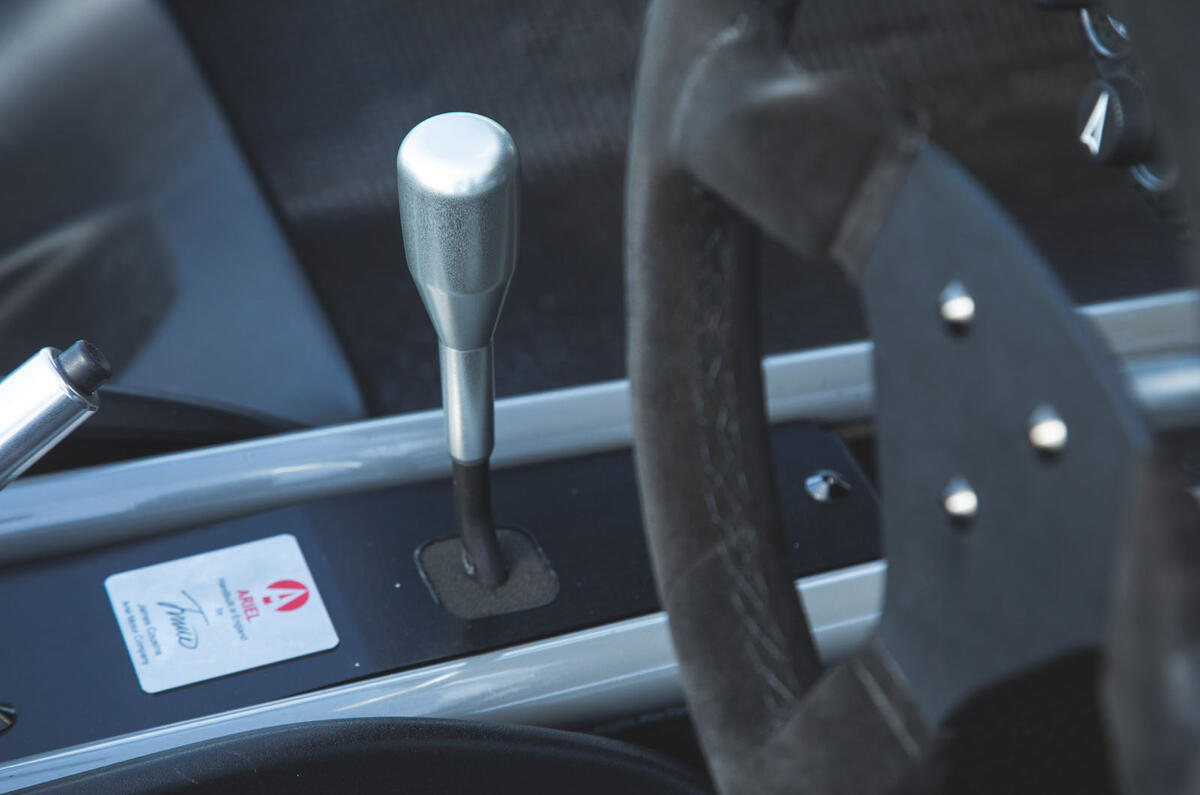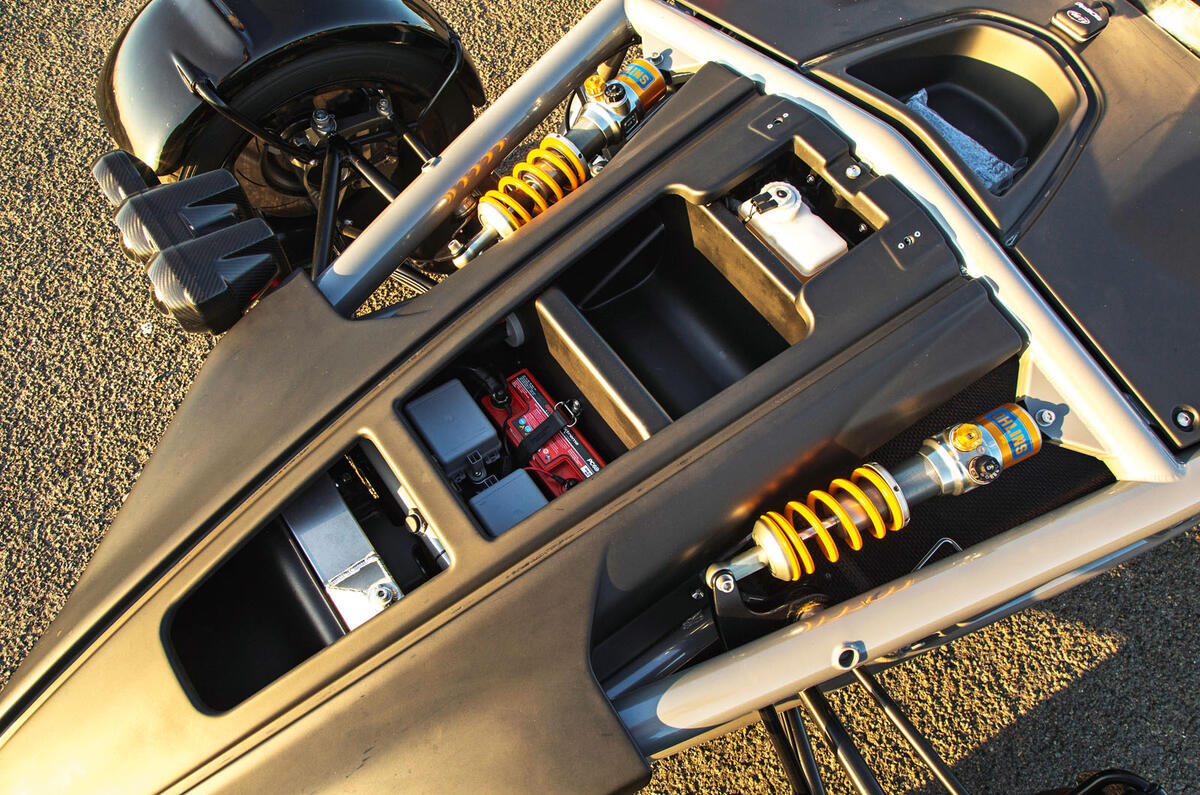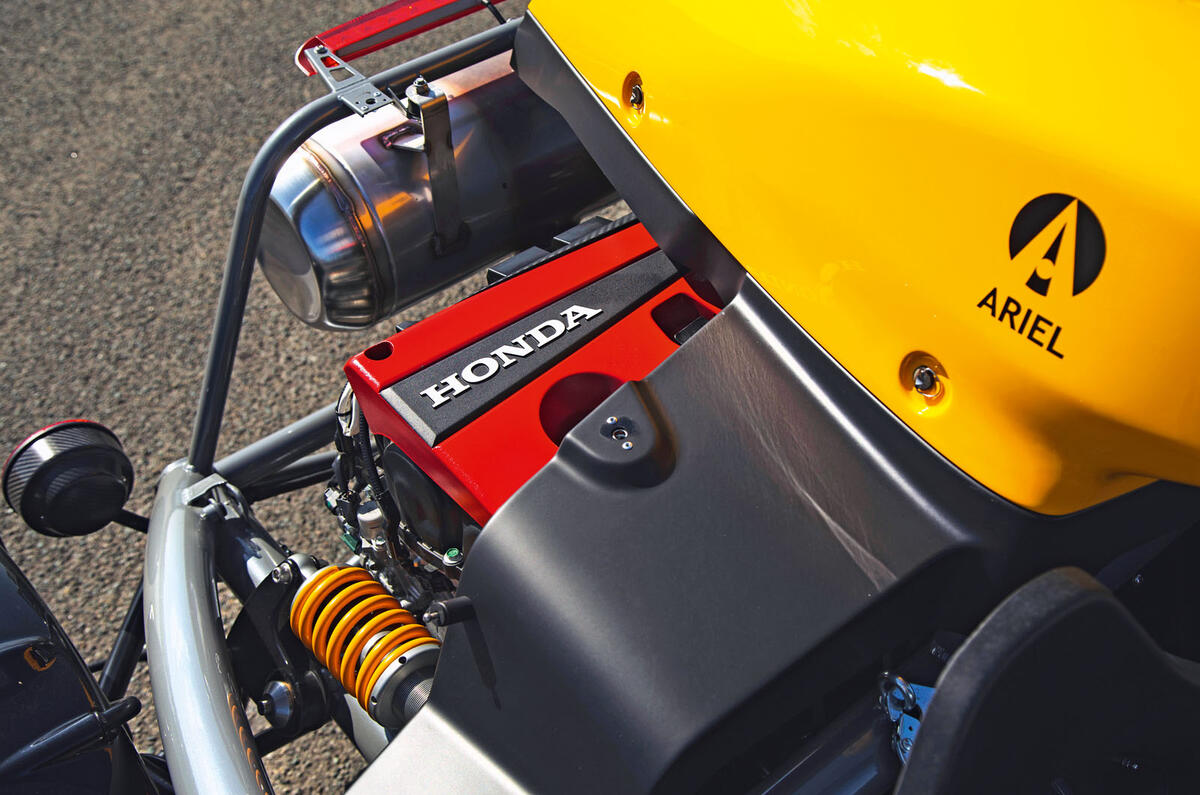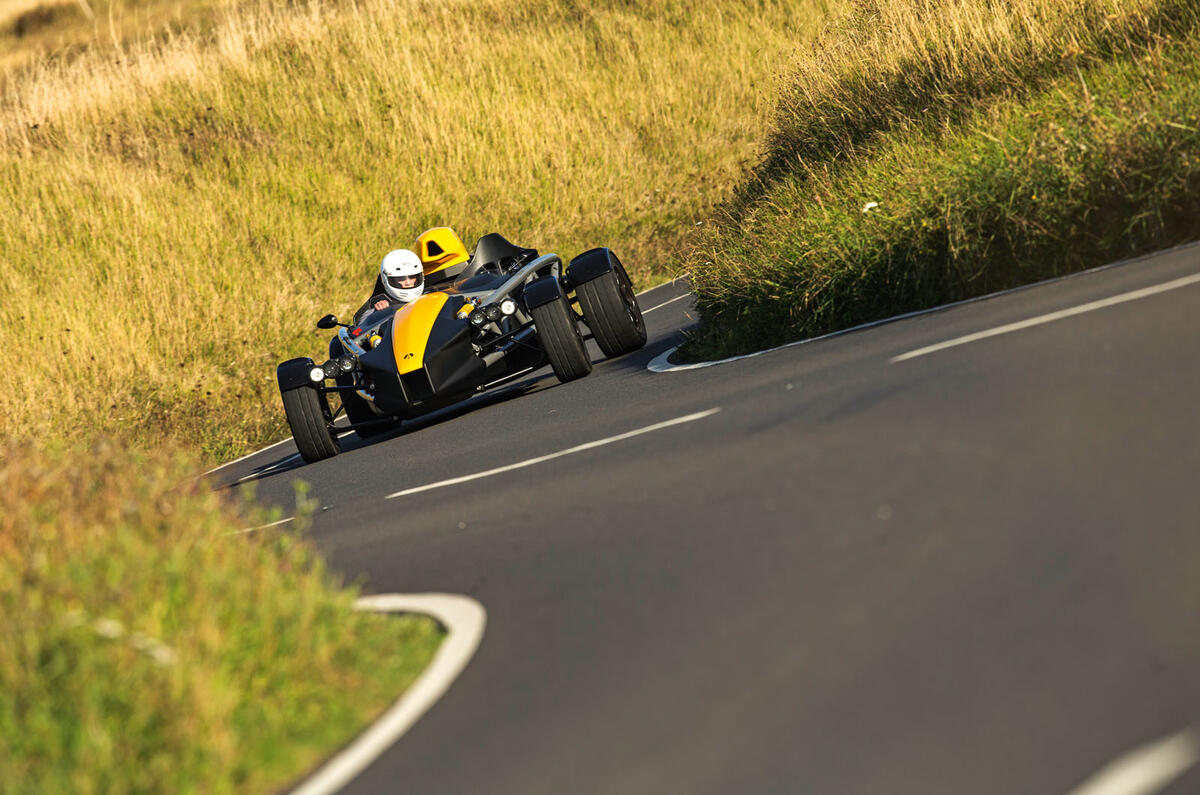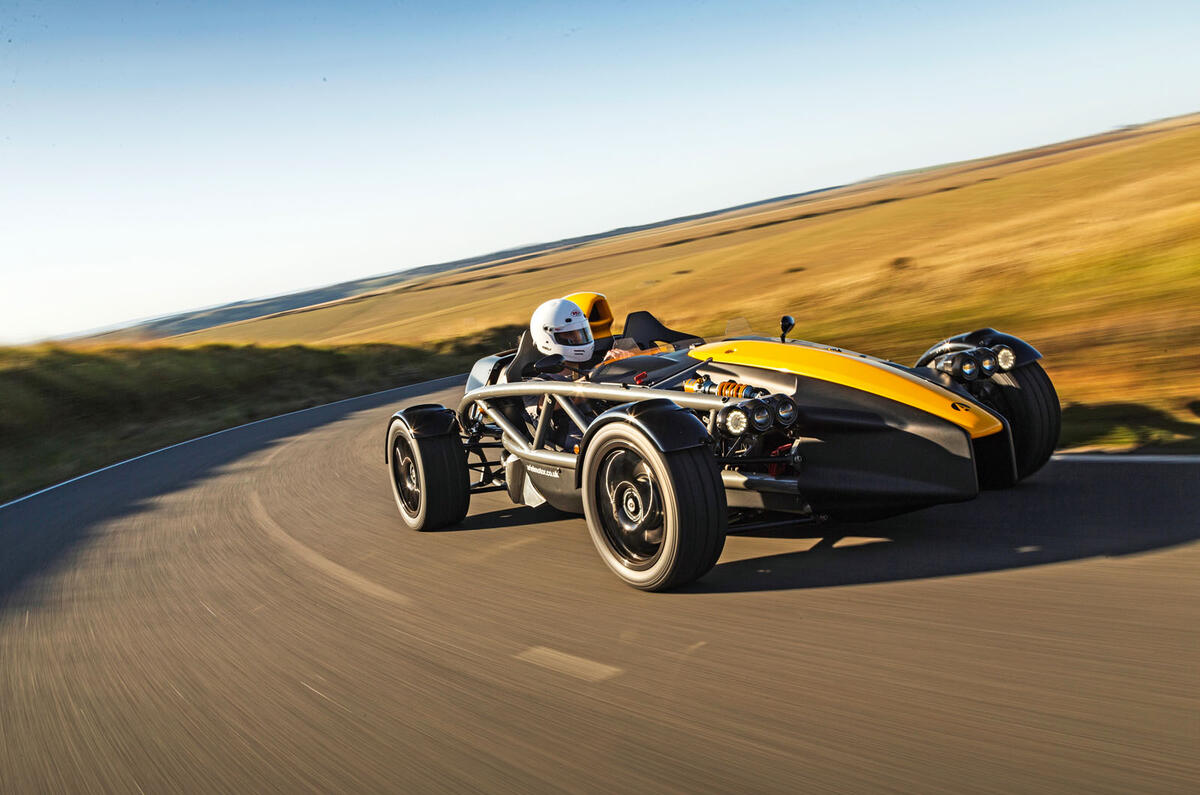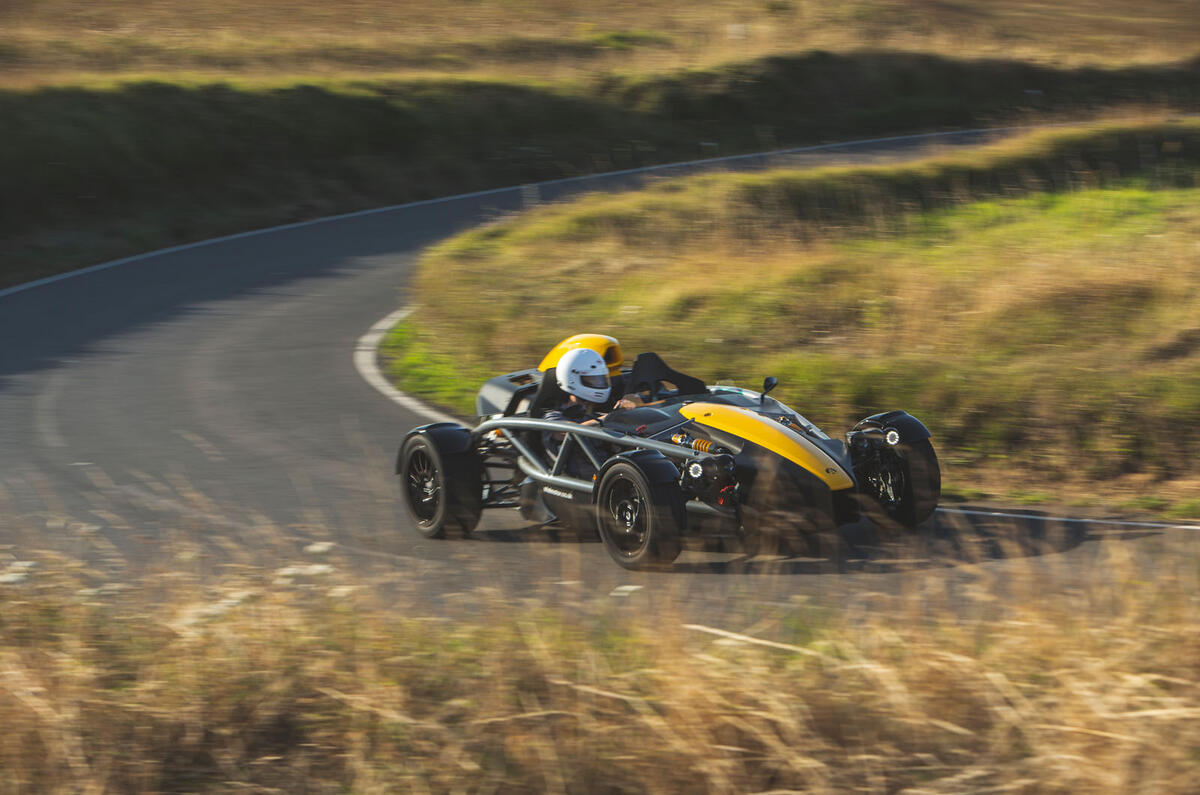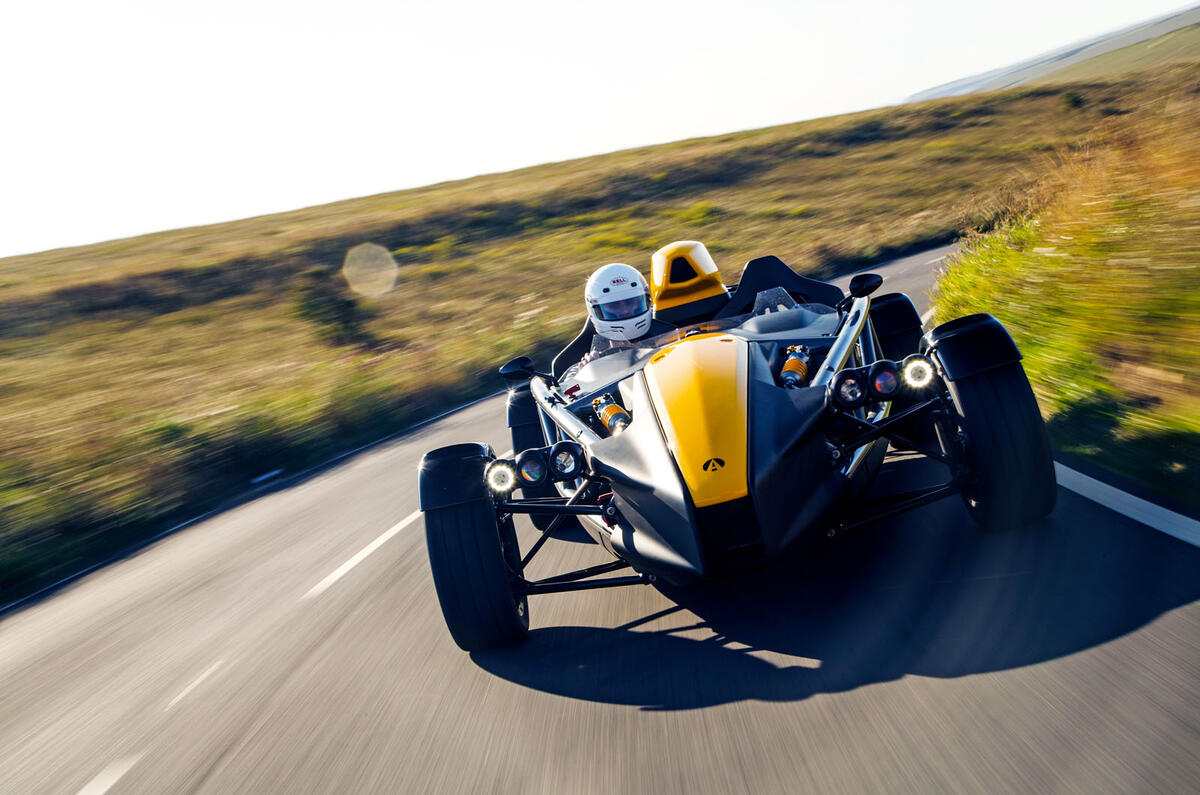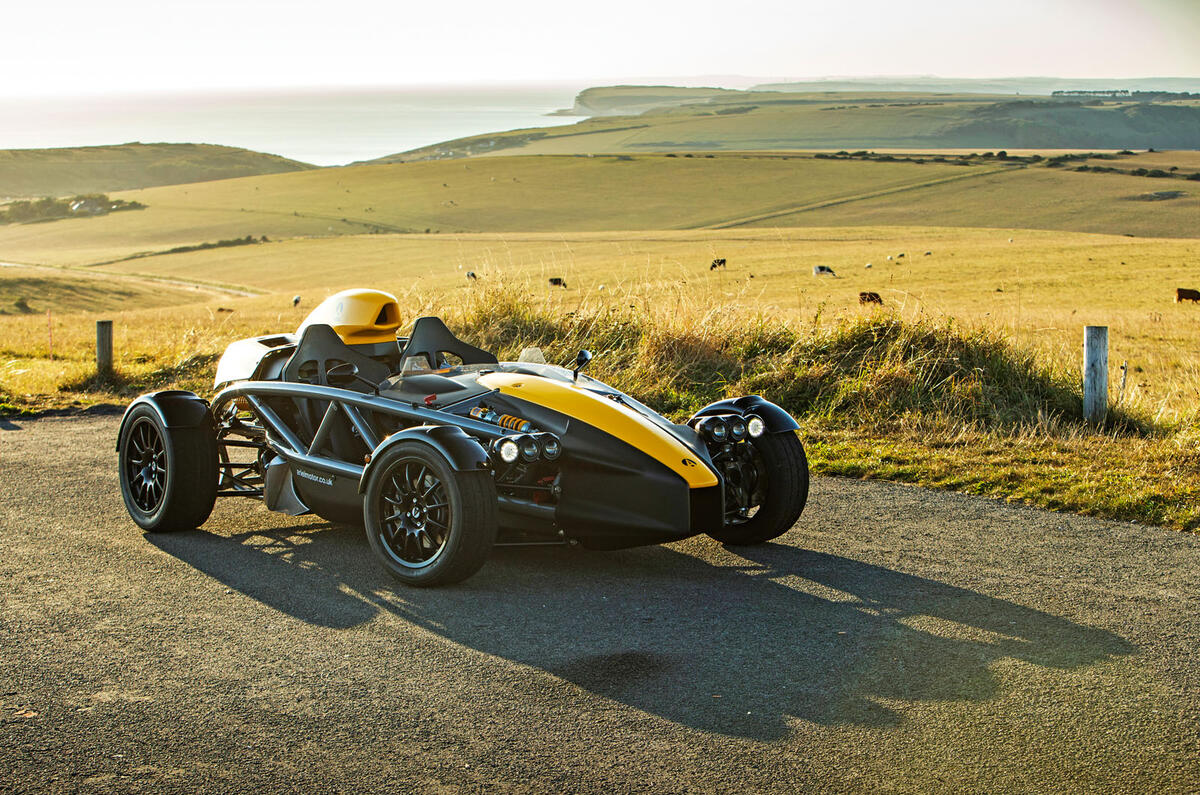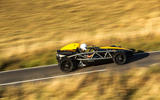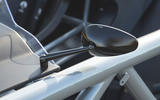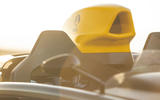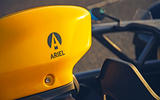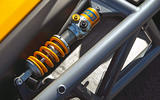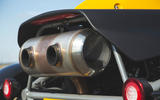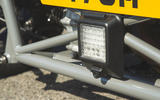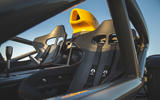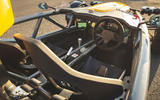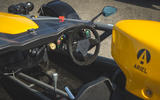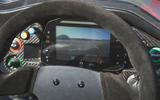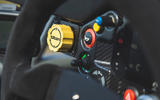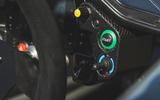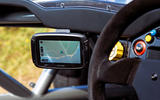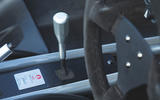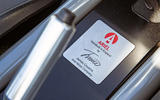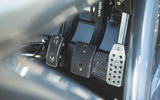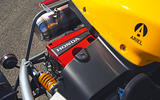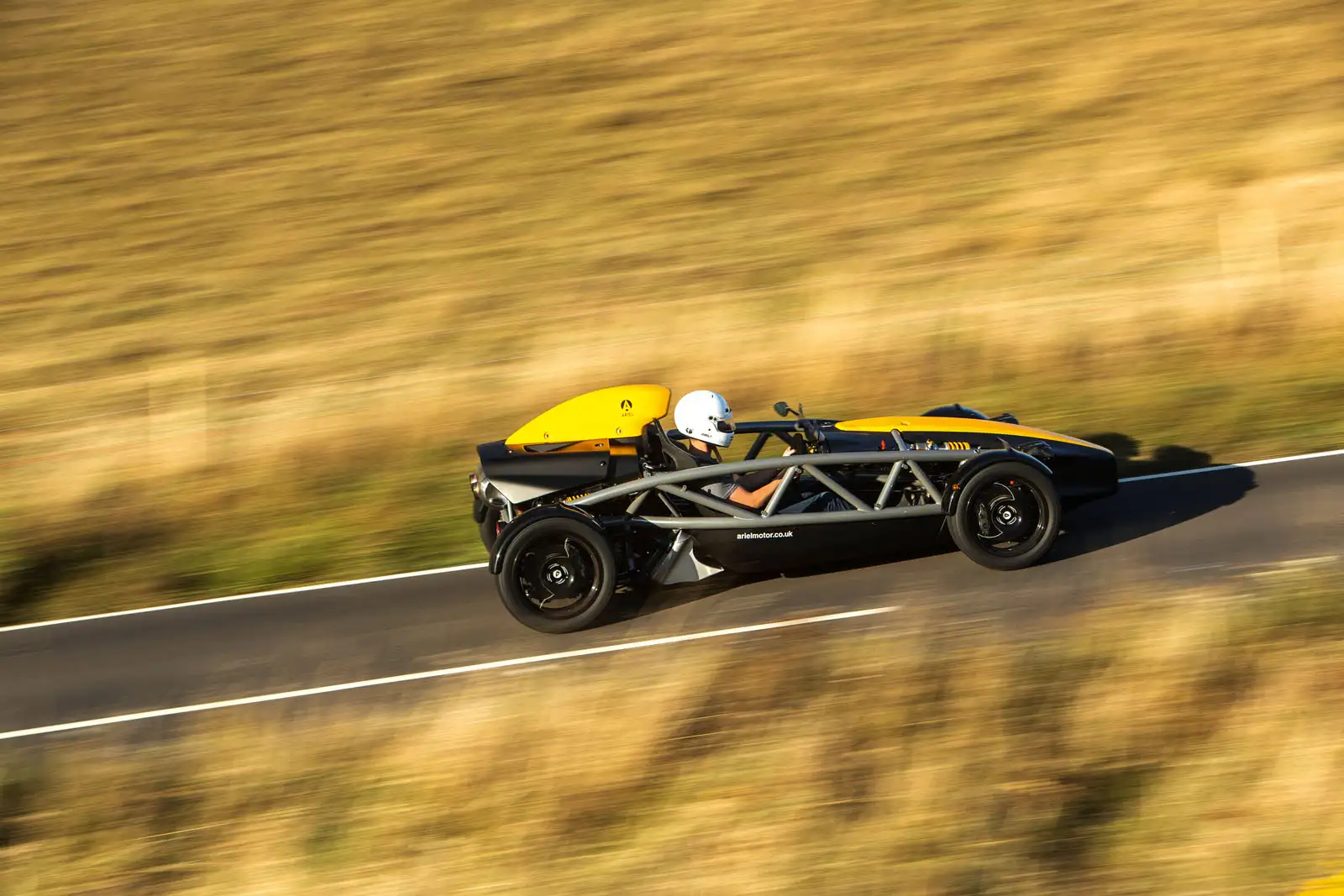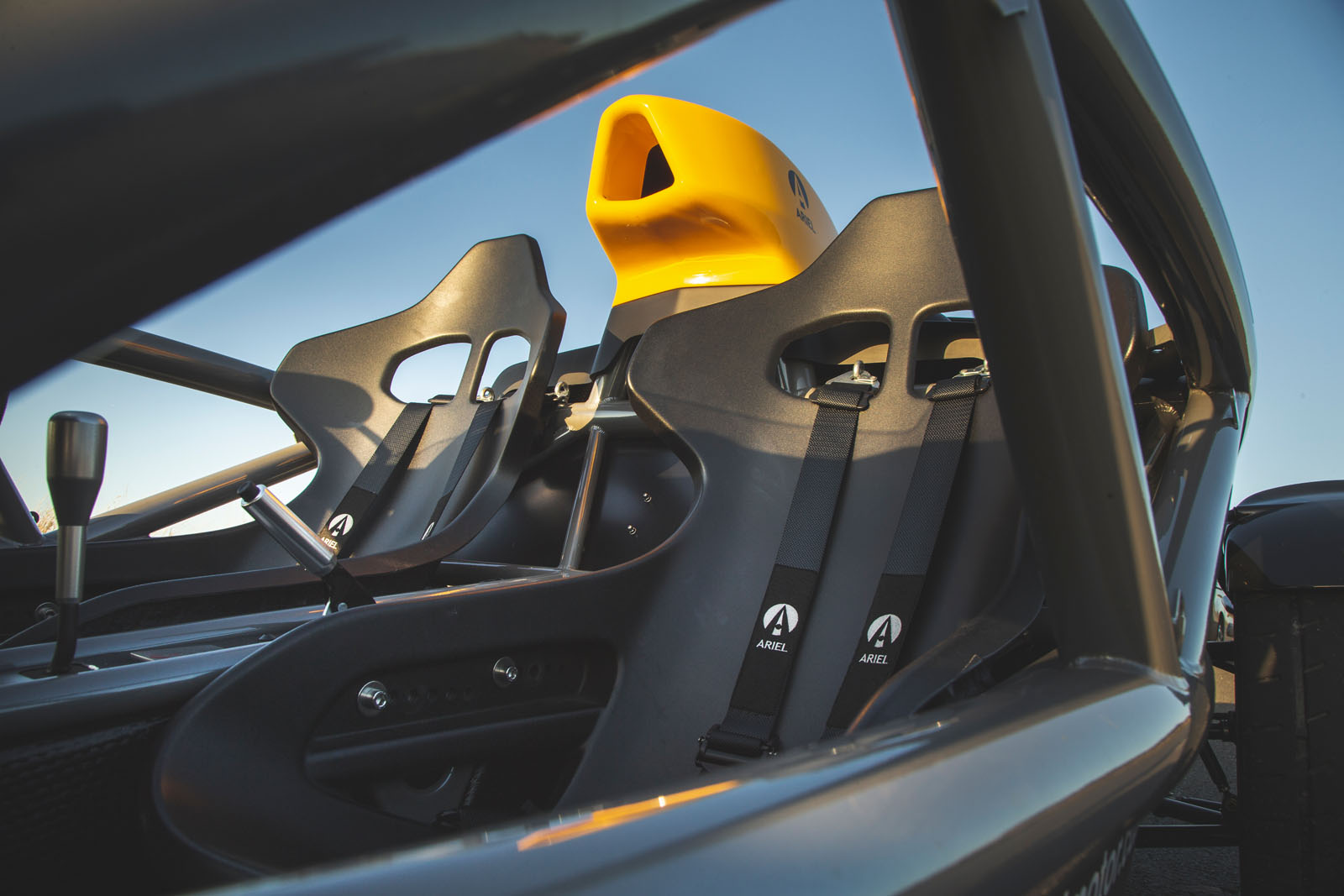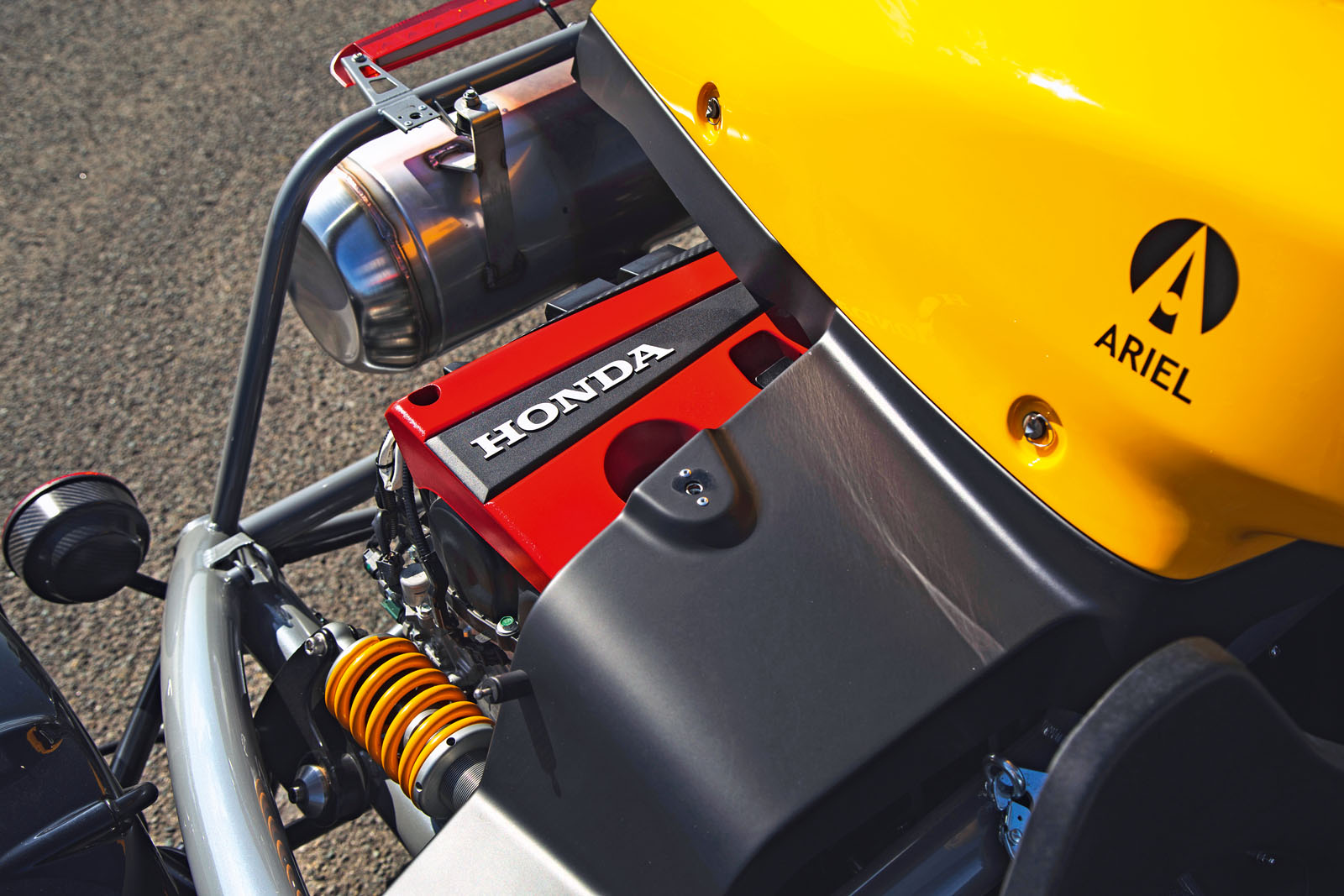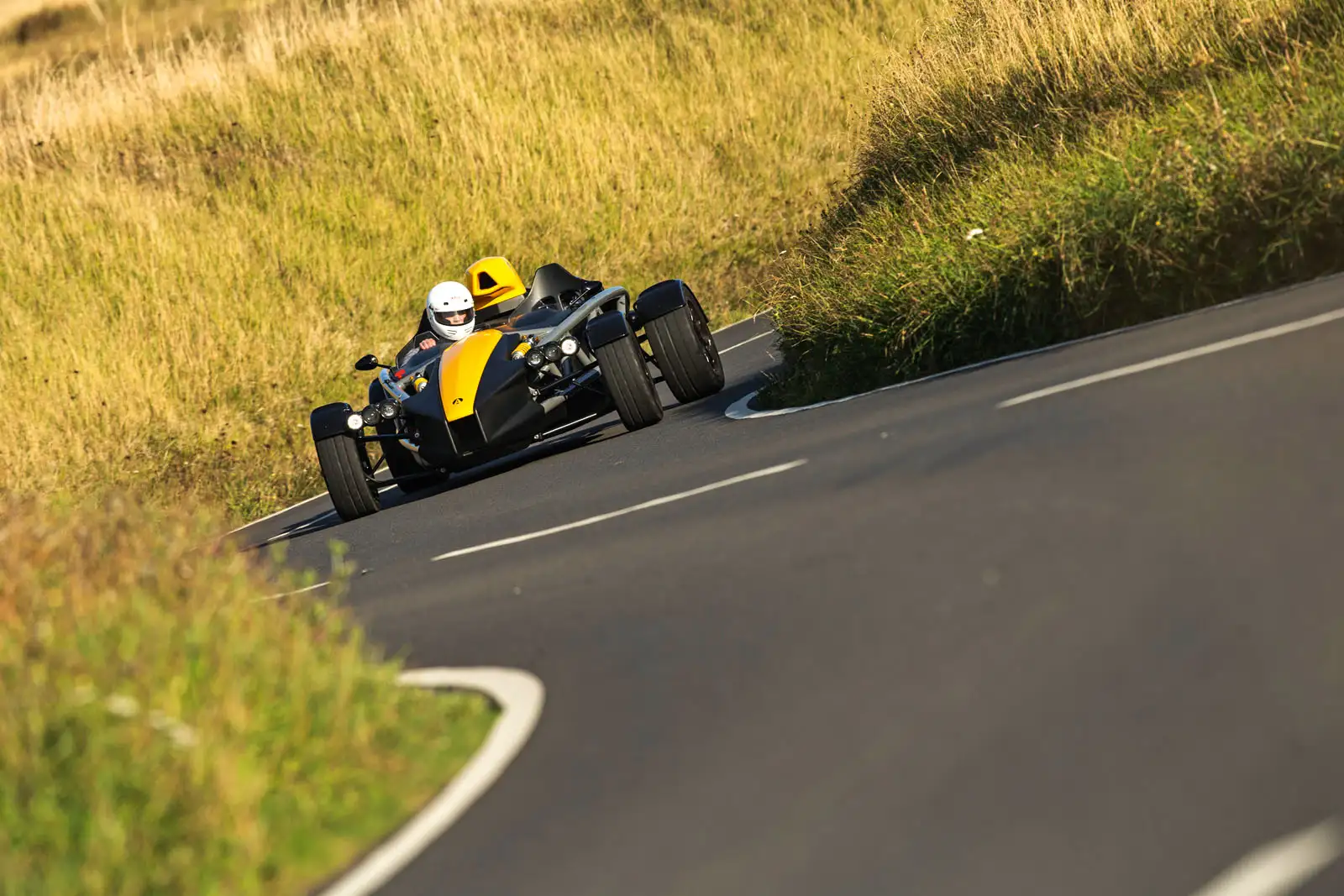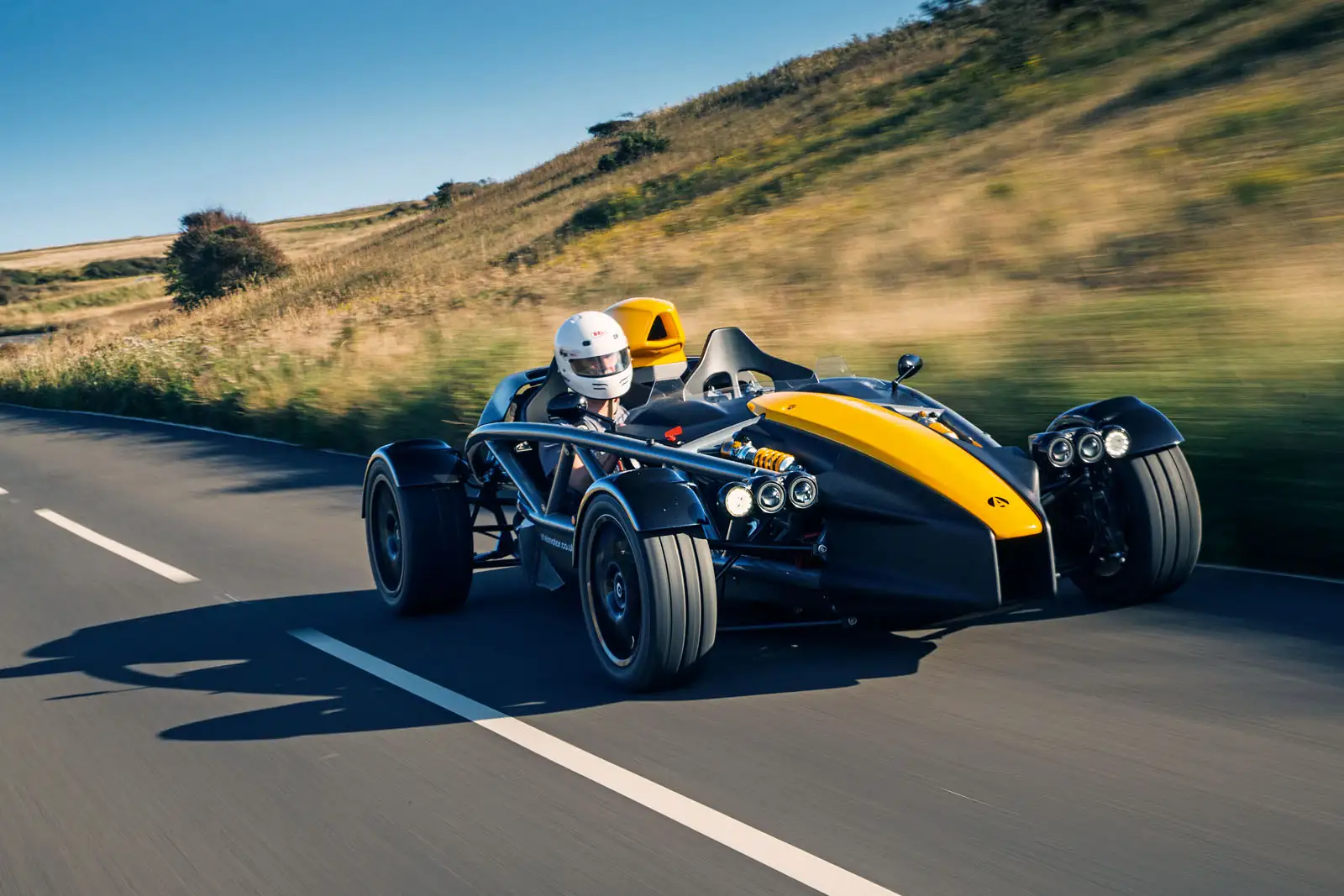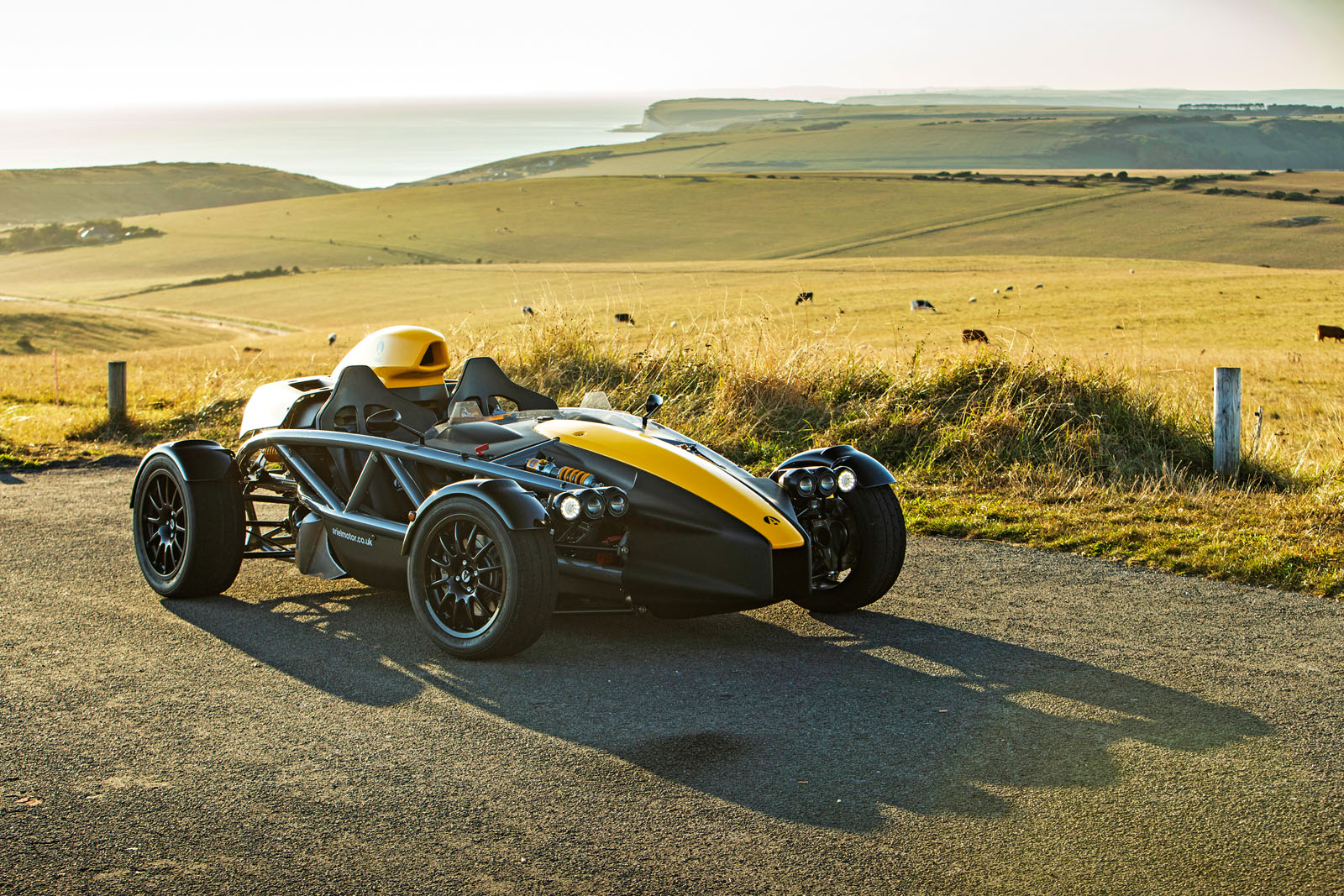Because it so obviously exposes its driver to their immediate surroundings, it doesn’t seem accurate to describe the Atom as being in possession of a traditional car interior.
Cockpit seems like a more apt choice of word; and as far as cockpits go, even in the world of track-bred thrill machines, the Atom’s is still a wonderfully sparsely finished one. Stripped out and with no room for anything but the functional, there is almost nothing here to distract you from the task of driving – particularly if you’re prepared to excuse Ariel’s decision to offer a fitted motorbike satellite navigation system in the car as an option, which our test car had.
A pair of individual plastic buckets seats replace the one-piece, two-seater moulding of the old car (a change most welcome because it makes adjusting the position of the driver’s seat that much easier), and elsewhere there’s a gearlever, three pedals, and a smattering of buttons and switches housed behind a relatively small-diameter, suede-upholstered steering wheel.
The closest our Atom came to having a bona fide infotainment suite was the GPS lap-time recorder integrated into the digital instrument display. It consists of a receiver mounted just ahead of the cockpit, which can automatically detect when you’re on a circuit (at least in the UK) and uses satellite tracking to record and display your lap times on the screen in front of you.
A more surprising optional extra was the reversing camera (£395). This sees through a lens housed just beneath the rear foglight, with the video feed being automatically transmitted to the digital instrument screen as soon as reverse is selected. Given how limited over-shoulder visibility is with a helmet on, it’s very welcome. Ariel had also seen fit to equip the Atom with an aftermarket TomTom portable navigation unit, which was mounted to a charging dock that had been wired into the car’s power supply. This was a £480 option and worked well enough.
The low, thin sheet of clear Perspex that runs the width of the scuttle, with upright protrusions ahead of each seat, is more wind deflector than windscreen. It’s optional-fit (£191), curiously, but also the sort of extra you’d only leave off your Atom order form by mistake, or out of ignorance of just how important a contribution to on-board wind protection and all-round touring comfort it makes.
Clambering over the Atom’s intricate exoskeleton spaceframe in as graceful a manner as the elasticity of your trousers allows, and then lowering yourself down into the driver’s seat, certainly brings with it plenty of sense of occasion. Once you’re in, the view immediately forwards and sideways is almost entirely unimpeded, although that sense of remarkable visibility takes a bit of a hit when you realise that driving the Atom is something you’d only ever do with a helmet on.
Otherwise, the car’s general ergonomic layout is excellent. Storage space becomes a rather moot point when you realise that there is little more you’d carry in an Atom that you couldn’t fit in a rucksack or in the storage box of a superbike; and in that respect, cars like the Caterham Seven do have a practicality advantage over it. Still, there is a small compartment under the nose cover that’s big enough for a drink and an energy bar or two. Which is handy, because as you’re about to find out, you’ll probably be in need of them.


